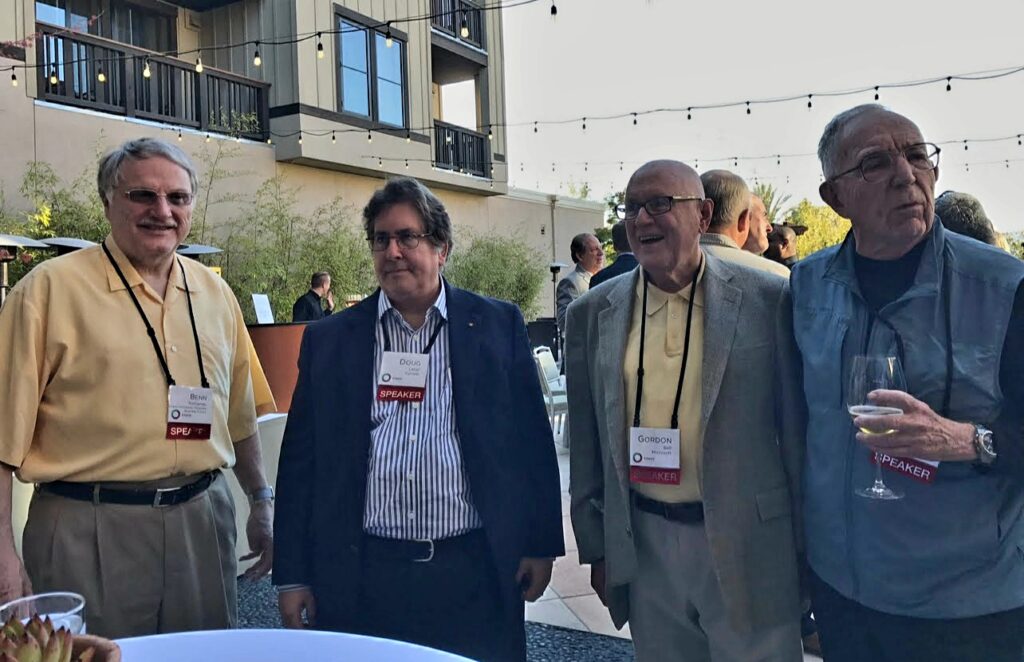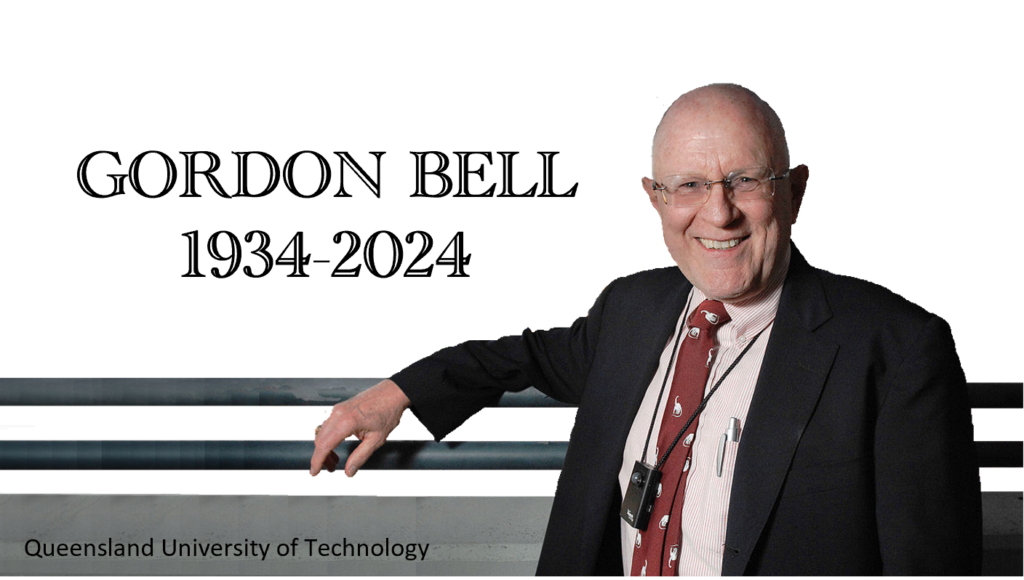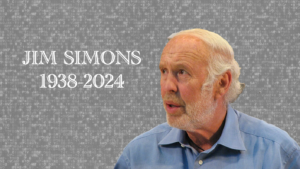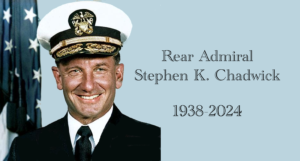“The history of computers goes back over 200 years,” writes history journalist Timothy Williamson. “At first theorized by mathematicians and entrepreneurs, during the 19th century mechanical calculating machines were designed and built to solve the increasingly complex number-crunching challenges. The advancement of technology enabled ever more-complex computers by the early 20th century, and computers became larger and more powerful.”[1] The computing era began in earnest during the mid-twentieth century and one of the pioneers of that era was Chester Gordon Bell. Like too many other pioneers of that era, Gordon is no longer with us. He passed away on 17 May. Just before passing, he told his family, “Old computer pioneers never die, they just lose their physical bits.” Born in Kirksville, Missouri, he grew up helping with the family business, Bell Electric, repairing appliances and wiring homes. His interest in electronics never wavered. He attended the Massachusetts Institute of Technology where he earned both a bachelor’s degree (1956) and a master’s degree (1957) in electrical engineering.
 Gordon was a member of TTI Vanguard, an organization I had the pleasure of being on the board of directors for many years. I met Gordon through another joint good friend, the late Doug Lenat of Cycorp. Doug unfortunately passed away last year.[2] In 2017, Gordon was a speaker Enterra’s AI Conference in Napa Valley, California. He is the third person from the left in the attached picture. In the picture, from left to right, are Professor Benn Konsynski of Emory University, Doug Lenat, Gordon Bell, and Professor Edward Feigenbaum of Stanford University. That was a great picture of four brilliant foundational players in computer science and symbolic AI — all of whom were gracious enough to speak at our conference in Napa.
Gordon was a member of TTI Vanguard, an organization I had the pleasure of being on the board of directors for many years. I met Gordon through another joint good friend, the late Doug Lenat of Cycorp. Doug unfortunately passed away last year.[2] In 2017, Gordon was a speaker Enterra’s AI Conference in Napa Valley, California. He is the third person from the left in the attached picture. In the picture, from left to right, are Professor Benn Konsynski of Emory University, Doug Lenat, Gordon Bell, and Professor Edward Feigenbaum of Stanford University. That was a great picture of four brilliant foundational players in computer science and symbolic AI — all of whom were gracious enough to speak at our conference in Napa.
A brilliant scholar, Gordon was awarded a Fulbright Scholarship in 1957-58 and used it to attend New South Wales University of Technology (now UNSW) in Australia. While there, he taught classes on computer design and programmed one of the first computers to arrive in Australia (called UTECOM, an English Electric DEUCE). He also published his first academic paper. Returning to the US, he worked in the MIT Speech Computation Laboratory under Professor Ken Stevens, where he wrote the first analysis by synthesis program.[2] Despite his academic prowess, Gordon was drawn to work in the commercial world where his ideas could be made reality. Retired investor James L. Pelkey reports, “In 1960, Kenneth Olsen and Harlan Anderson the co-founders of Digital Equipment Corporation (DEC), recruited Bell to join their start-up. For the next six years (1960-1966), Bell made major contributions to the PDP-1, including designing the first UART chip. He was also the principal architect of the PDP-4 and PDP-6 computers.”[3] Pelkey reports that, in 1966, Gordon left DEC to join the faculty of Carnegie Mellon University to teach computer science (1966-1972). Then, in 1973, Bell rejoined DEC where he became vice-president of engineering in charge of developing the VAX computer, DEC’s most successful computer.
Pelkey notes that throughout this period, Bell was also a member of the government’s Advanced Research Projects Agency (ARPA, now DARPA) community. In 1983, Gordon suffered a heart attack and shortly thereafter resigned from DEC. However, he didn’t let the heart attack slow him down. He founded Encore Computer, one of the first shared memory, multiple-microprocessor computers to use the snooping cache structure. Although the company was not successful, Gordon would not be stopped. He was a founding member of Ardent Computer in 1986, becoming Vice President of R&D in 1988, and remained at the company until it merged with Stellar in 1989, to become Stardent Computer. During the 1980s he became involved with public policy, becoming the first and founding Assistant Director of the Computer and Information Science and Engineering (CISE) Directorate of the National Science Foundation (NSF), and led the cross-agency group that specified the national research and education network (NREN).
In 1987, he established the Association for Computing Machinery (ACM) Gordon Bell Prize (administered by the ACM and IEEE). The ACM staff notes, “[The Gordon Bell Prize] is awarded each year to recognize outstanding achievement in high-performance computing. The purpose of the award is to track the progress over time of parallel computing, with particular emphasis on rewarding innovation in applying high-performance computing to applications in science, engineering, and large-scale data analytics. to encourage development in parallel processing.”[4] Along with David Cutler, he also established the ACM/Computer Science Teachers Association (CSTA) Cutler-Bell Prize in High School Computing. This prize recognizes talented high school students in computer science. The intent of the program is to promote and encourage the field of computer science, as well as to empower young and aspiring learners to pursue computing challenges outside of the traditional classroom environment.
Ever curious to explore new ideas, Gordon started advising Microsoft between 1991 and 1995 in its efforts to start a research group. He joined the effort full-time in August 1995, studying telepresence and related ideas. He was the experiment subject for the MyLifeBits project, an experiment in life-logging. This was an attempt to fulfill Vannevar Bush’s vision of an automated store of the documents, pictures (including those taken automatically), and sounds an individual has experienced in his lifetime, to be accessed with speed and ease. For this, Gordon digitized all documents he read or produced, CDs, emails, and so on. He was a researcher emeritus at Microsoft Research from 1995-2015.
One of Gordon’s most notable contributions to the field of computing is known as Bell’s Law. Wikipedia explains, “Bell’s law of computer classes was first described in 1972 with the emergence of a new, lower priced microcomputer class based on the microprocessor. Established market class computers are introduced at a constant price with increasing functionality and performance. Technology advances in semiconductors, storage, interfaces and networks enable a new computer class (platform) to form about every decade to serve a new need. Each new — usually lower priced — class is maintained as a quasi-independent industry (market). Classes include: mainframes (1960s), minicomputers (1970s), networked workstations and personal computers (1980s), browser-web-server structure (1990s), palmtop computing (1995), web services (2000s), convergence of cell phones and computers (2003), and Wireless Sensor Networks (2004). Bell predicted that home and body area networks would form by 2010.”
Gordon’s contributions to the field of computing did not go unnoticed. He was elected a member of the National Academy of Engineering in 1977 for contributions to the architecture of minicomputers. He is also a Fellow of the American Academy of Arts and Sciences (1994), American Association for the Advancement of Science (1983), Association for Computing Machinery (1994), IEEE (1974), and member of the National Academy of Sciences (2007), and Fellow of the Australian Academy of Technological Sciences and Engineering (2009). He was also a member of the advisory board of TTI/Vanguard and a former member of the Sector Advisory Committee of Australia’s Information and Communication Technology Division of the Commonwealth Scientific and Industrial Research Organization. He was the first recipient of the IEEE John von Neumann Medal, in 1992.
His other awards included Fellow of the Computer History Museum, the AeA Inventor Award, the Vladimir Karapetoff Outstanding Technical Achievement Award of Eta Kappa Nu, and the 1991 National Medal of Technology by President George H. W. Bush. He was also named an Eta Kappa Nu Eminent Member in 2007. In 1993, Worcester Polytechnic Institute awarded Bell an Honorary Doctor of Engineering, and in 2010, Bell received an honorary Doctor of Science and Technology degree from Carnegie Mellon University. The latter award referred to him as “the father of the minicomputer.”
Gordon stayed as active as possible to the end of his life. His family reports, [He celebrated] his stepdaughter’s wedding in December 2023, dancing to ‘The Way You Look Tonight’ by Rod Stewart. He also gave his ‘Last Lecture’ on ‘Bell’s Law of Computer Classes’ at USC’s Bekey distinguished Lecture & Munushian Distinguished Lecture on April 1, 2024. Gordon was thrilled at the accomplishments of all the ACM Gordon Bell Prize recipients since 1987, for outstanding achievement in high-performance computing as well as the high schoolers recognized by the ACM/CSTA Cutler-Bell Prize pursuing computing challenges outside of the traditional classroom.” Gordon was a generous and happy genius. He always seemed to be smiling and was always ready to lend a helping hand. He will be missed.
Footnotes
[1] Timothy Williamson, “History of computers: A brief timeline,” Live Science, 22 December 2023.
[2] Stephen DeAngelis, “A Great Tree of Artificial Intelligence has Fallen: Douglas Bruce Lenat,” Enterra Insights, 2 September 2023
[3] Wikipedia, “Gordon Bell.”
[4] James Pelkey, “Gordon Bell,” The History of Computer Communications, 17 June 1988.
[5] Staff, “About ACM Gordon Bell Prize,” Association for Computing Machinery.





